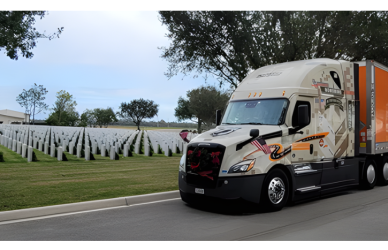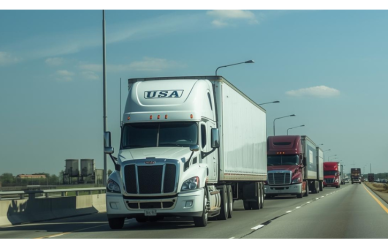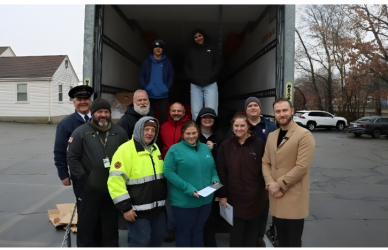The Federal Motor Carrier Safety Administration (FMCSA) is investigating whether warning devices on stationary commercial motor vehicles (CMVs) effectively reduce crash risk.
On Wednesday, Jan. 8, FMCSA shared its plan to conduct a “Study of Warning Devices for Stopped Commercial Motor Vehicles” by publishing a notice in the Federal Register. The goal? To analyze whether warning devices significantly impact drivers’ behavior in scenarios involving parked or disabled CMVs—and, if they do, to determine how and to what extent.
“It is an experimental study that requires data collection for evaluating whether warning devices meaningfully influence crash-relevant aspects of human performance in the presence of a parked or disabled commercial motor vehicle, and if so, how and to what extent,” FMCSA explained in its announcement.
The study is set to involve a sample group of 256 drivers.
Current Regulations on CMV Warning Devices
Under existing rules, all commercial motor vehicles are required to carry warning devices. When a vehicle is stopped on the road or the shoulder—not including cases where traffic conditions prevent it—these devices must be deployed following specific guidelines. Placement depends on various factors, such as whether the roadway is straight or curved.
“These requirements follow from the basic notion that increasing the conspicuity of a parked or disabled commercial motor vehicle makes it easier to see and recognize, thereby reducing the risk of a crash involving passing motorists,” the FMCSA stated.
However, the growing presence of autonomous vehicle (AV) technology has prompted new scrutiny of these longstanding regulations.
Autonomous Vehicles and the Warning Device Debate
Back in December 2024, FMCSA rejected a request from Waymo and Aurora to exempt autonomous trucks from the current warning device requirements.
The companies proposed outfitting their autonomous trucks with mounted warning beacons on the truck cab as an alternative to deploying traditional devices like reflective triangles or flares.
FMCSA declined the application, describing the request as overly broad. Nonetheless, the agency left the door open for exemption applications focused on narrower aspects of the regulation.
Now, the FMCSA is doubling down by launching a formal investigation to determine how effective the current warning device regulations truly are.
Using Modern Tools for a Deeper Analysis
Advancements in technology are providing FMCSA with new ways to measure how drivers respond to warning devices. Tools such as sensors and eye-tracking systems can offer valuable insights into reaction times and levels of driver attention.
“FMCSA plans to implement these modern tools in a controlled experiment at a closed-course, state-of-the-art driving research facility,” the agency said. “This setup will enable the most comprehensive study of warning device effectiveness conducted to date.”
The findings could have far-reaching implications, potentially shaping future regulations around warning devices. Additionally, the data may assist FMCSA in responding to exemption requests for alternative solutions, such as those proposed by Waymo and Aurora.
“FMCSA plans to implement these modern tools in a controlled experiment at a closed-course, state-of-the-art driving research facility that will allow the most comprehensive examination of the effects of warning devices to date,” the agency wrote. “The results of the study may support future rulemaking related to warning devices and provide baseline data necessary to inform agency decisions on exemption applications for alternative warning device products.” FMCSA concluded.
Source: Land Line











